- PreviousArtificial Intelligence for the Warfighter: How Emerging Technologies are Changing Decision-MakingPrevious:Artificial Intelligence for the Warfighter: How Emerging Technologies are Changing Decision-Making
- NextFusion and Filter: The Importance of Data AllocationNext:Fusion and Filter: The Importance of Data Allocation
Artificial Intelligence for the Warfighter: How Emerging Technologies are Changing Decision-Making
Start“Speed is the essence of war."
- Sun TzuIn an era of exponentially expanding data, the challenge of collecting and distilling information into actionable insights has become exceedingly daunting. The amount of information in the world is increasing far more quickly than our ability to process it; there is simply too much data for humans to analyze in order to keep pace with mission demands. To better anticipate the multitude of complex adversary threats, analysts must be armed with the processing speeds that modern technology provides. New advances in automation and artificial intelligence (AI) are increasingly unburdening analysts and providing greater visibility for the warfighter, but questions remain: how can we ensure that analytic outputs are accurate and contextualized to the mission? And what does ideal human-machine collaboration look like?
- NextFusion and Filter: The Importance of Data AllocationNext:Fusion and Filter: The Importance of Data AllocationPreviousArtificial Intelligence for the Warfighter: How Emerging Technologies are Changing Decision-MakingPrevious:Artificial Intelligence for the Warfighter: How Emerging Technologies are Changing Decision-Making
1/7
Vision and Strategy for the Future Battlefield
Both the White House and the Pentagon recently released directives that underscore the transformative nature of AI and emphasize its centrality to maintaining U.S. dominance on the world stage. The Department of Defense’s (DoD) National AI Strategy outlines a new paradigm of combat, one in which planes, tanks, and ships no longer make the difference between victory and defeat; software does.
In this new paradigm, warfighters will not win simply because they have the best hardware; they will win because they have greater visibility and can assess and react to situations faster than their opponent. Humans process and perform about 10 million times slower than machines. As machines continue to progress, the strategic advantage in war will lie with whomever best utilizes automation and other AI technologies.
AI has the potential to be an enabling layer across nearly everything...and that means the opportunity to positively transform every corner of the department, from innovative concepts that change the way we fight, to improvements in the way we maintain our equipment, perceive our environment, train our men and women, defend our networks, operate our back office, provide humanitarian aid, and respond to disasters and more.Dana Deasy, Chief Information Officer, Department of DefenseTo provide the warfighter with superior visibility and accelerate reaction times, DoD is investing in AI-powered ISR (intelligence, surveillance, and reconnaissance) systems that can rapidly detect changes in mission environment, whether that be on the ground, the seafloor, in outer space, or cyberspace.
Contents
2/7
Fusion and Filter: The Importance of Data Allocation
Analysts interact with an enormous range of data streaming in diverse formats from multiple different sensors and platforms, often with duplicative information and unresolved discrepancies. In order to build accurate and comprehensive situational awareness, analysts are tasked with integrating all of this disparate data together into a cohesive narrative. One of the more immediate applications of AI will be to provide decision-makers with a common operating picture by fusing data from sensors in all domains into one display. These processes of sensor fusion and data filtering can significantly reduce workloads for operators and analysts.
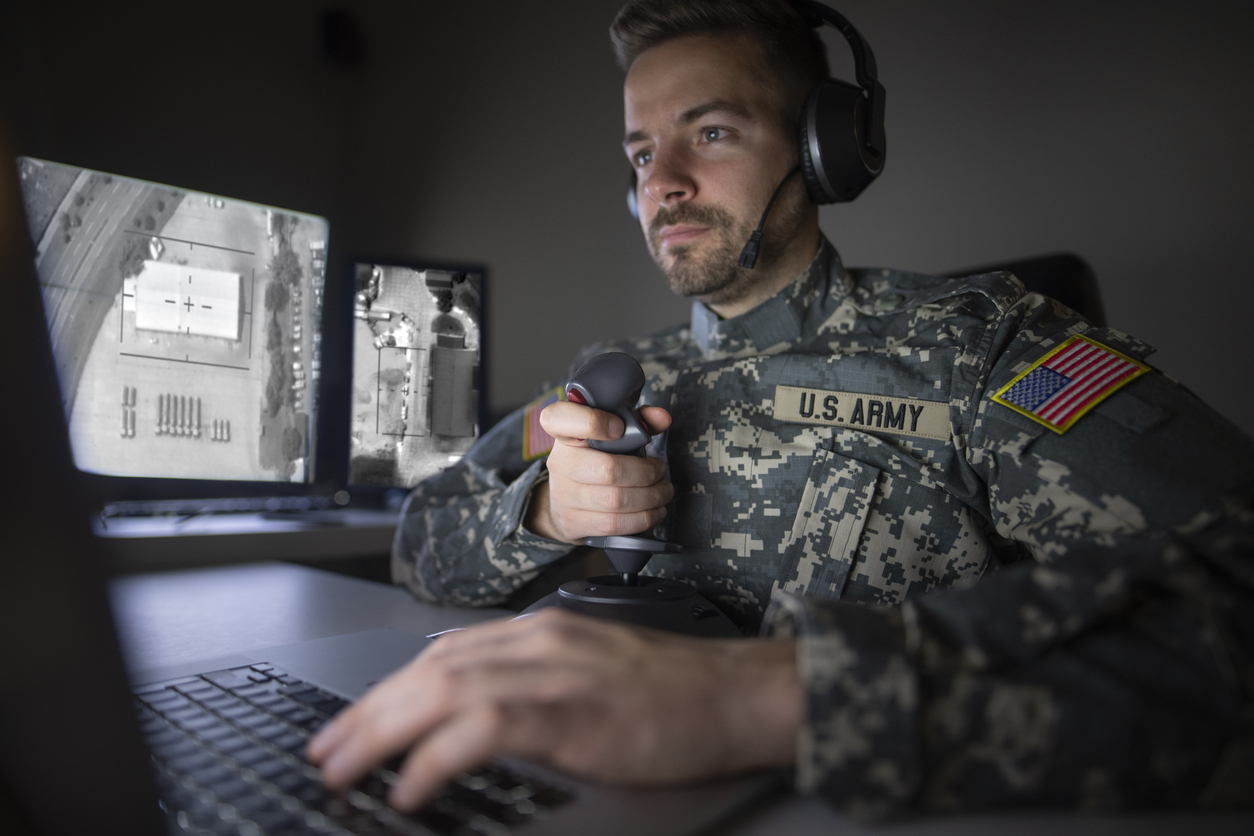
The Army Research Lab (ARL) has taken this one step further with a well-known commercial machine learning technique referred to as “collaborative filtering.” ARL’s approach utilizes the same AI that provides people with personalized recommendations on websites like Netflix and Amazon to improve inferencing capacity and help soldiers decipher hints and respond more quickly in complex environments. This technique can learn 13 times faster than current methods, making it a promising candidate for inclusion in a suite of tools embedded on the next generation combat vehicle.
Contents
3/7
AI-Enabled Electronic Warfare
The rise in complexity of modern military systems, paired with the necessity of rapidly collecting, analyzing, and acting upon data, has increased our military’s dependency on the electromagnetic spectrum (EMS). As more wireless devices - both defense and commercial - are added, the spectrum becomes more crowded and contested. Moreover, adversaries such as Russia and China are actively working to erode U.S. access to the spectrum by disrupting the military’s ability to send and receive radio, infrared, and radar signals. The competing requirements for finite spectrum resources, along with the ubiquity of software-defined architectures and advanced digital signal processing in adversary systems, have made traditional responses with predefined countermeasures insufficient.
One method for overcoming adversarial jamming is AI-based STAP (space-time adaptive processing). AI-based STAP uses machine learning algorithms to autonomously and adaptively probe, sense, and characterize threats and then automatically generate countermeasures to new, undefined threats in real-time.
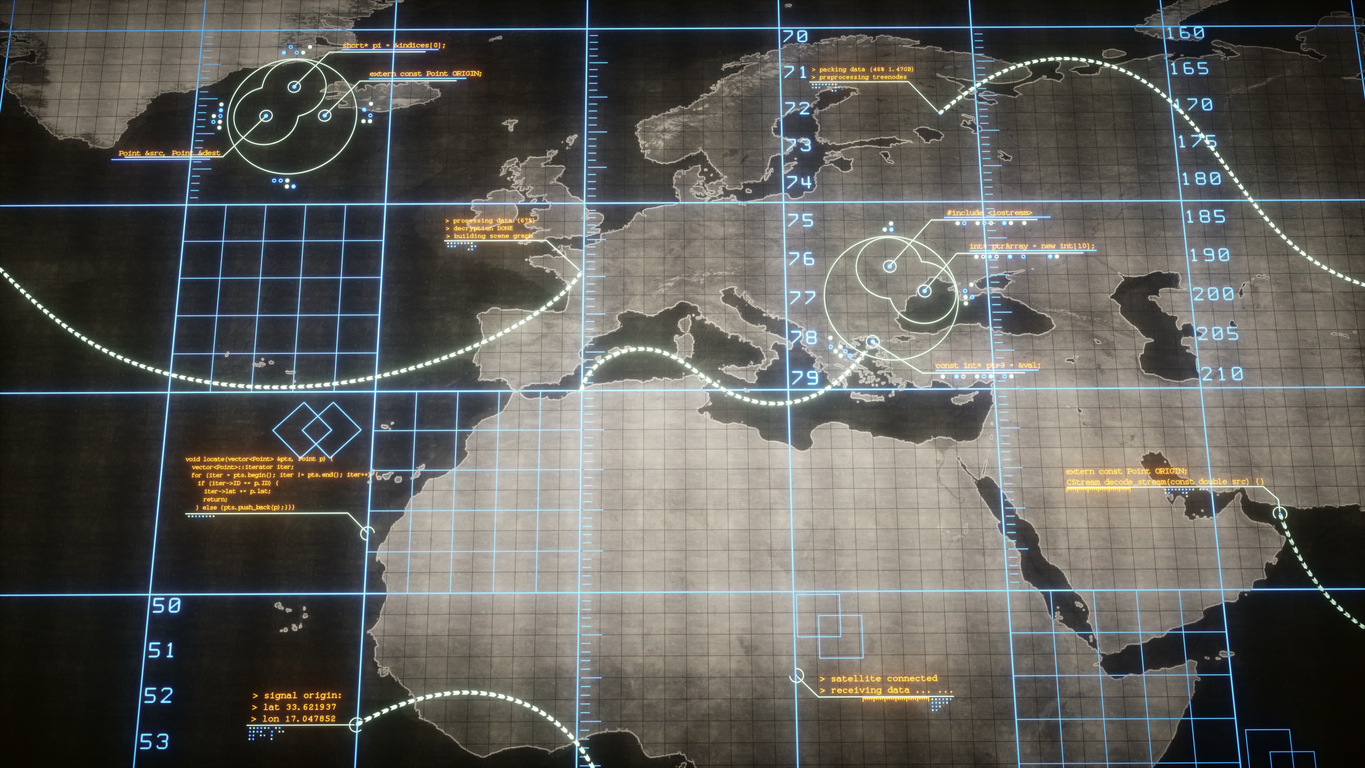
The Pentagon is also investing in offensive capabilities, broadly referred to as AI-based CEW (cognitive electronic warfare). These technologies help the military more effectively jam or spoof an adversary’s radar. DARPA (Defense Advanced Research Projects Agency), is working on three closely related projects that apply AI to the EMS and target either radar or wireless communications.
Contents
4/7
Augmented Intelligence in Unmanned Systems
Efforts to integrate AI into semi-autonomous and autonomous vehicles are underway in all branches of the military. Among its capabilities, this technology can perceive its environment, fuse and filter sensor data, and pass along only the relevant information to its human counterpart. DoD officials see this as an opportunity to automate some of the dull, dangerous, and dirty tasks previously left to analysts.
For example, missions can send unmanned vehicles into areas where they may not want to send personnel to conduct surveillance missions. The autonomous systems can also perform collaboratively with manned fleets to provide early threat detection, survey the environment, or simply serve in a logistics mission carrying supplies to and from other vehicles.
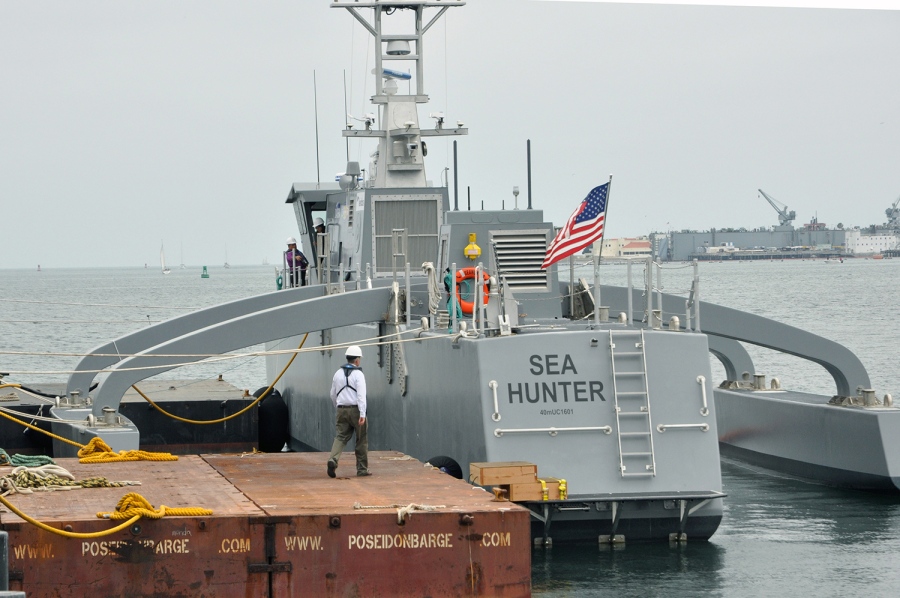
The Sea Hunter at the San Diego pier, where it underwent testing / Photo: Dianna Cahn/Stars and Stripes One of the most successful prototypes to date has been the Anti-Submarine Warfare Continuous Trail Unmanned Vessel, or “Sea Hunter.” If entered into service, the Navy would be able to utilize Sea Hunter to “autonomously navigate the open seas, swap out modular payloads, and coordinate missions with other unmanned vessels—all while providing continuous submarine-hunting coverage for months at a time.” The cost-savings could be immense, with some analysts estimating that Sea Hunter would cost roughly 35 times less to operate per day than the traditional inhabited destroyer.
ACTUV [Sea Hunter] represents a new vision of naval surface warfare that trades small numbers of very capable, high-value assets for large numbers of commoditized, simpler platforms that are more capable in the aggregate.Frank Kennedy, Director of the DARPA Tactical Technology OfficeContents
5/7
Mosaic Warfare
This shift to more autonomous systems is part of a larger DARPA effort to adopt what officials call the mosaic warfare approach. This strategy stems from the belief that the U.S. is losing its technological edge due to its focus on large, monolithic systems that cease to function if even a single piece is missing. The solution is to focus on lethality, rather than dominance, and leverage AI to coordinate large numbers of smaller, simpler systems - weapons and sensors, robots and satellites - and dynamically generate multi-domain command and control nodes.
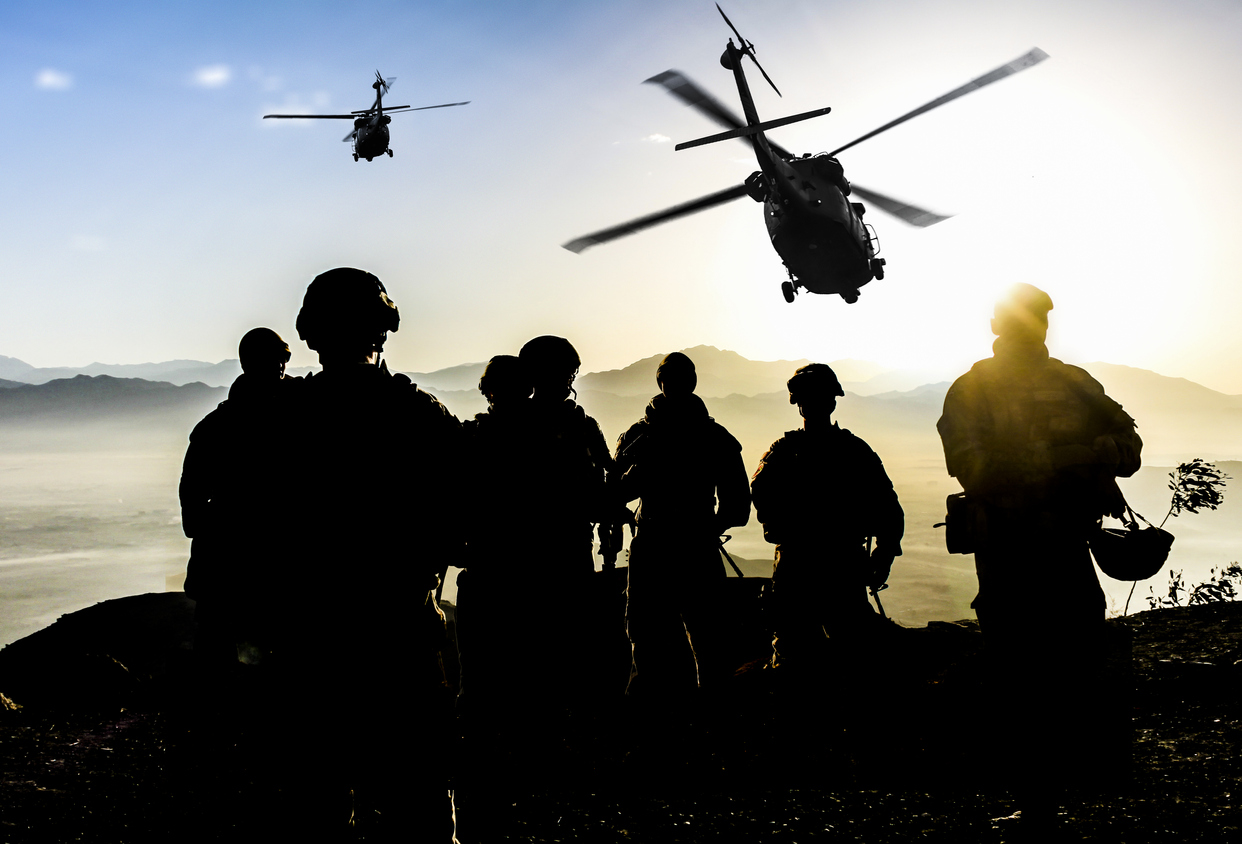
One component of this approach is called swarming, where autonomous vehicles will communicate and network with each other, and continue to adapt in real-time at machine speeds. DARPA Director Dr. Steven Walker believes that by deploying this mosaic model - which enables a multitude of systems to be integrated in an infinite number of ways - complexity becomes a powerful asymmetric weapon. “With lower costs and less complicated systems, the individual parts can work to provide an architecture that can build an invaluable capability for the whole. If an adversary can neutralize parts of this mosaic, then the other parts can respond with automation to achieve the desired effect. This moves far beyond the current universal standard.”
Contents
6/7
Looking Ahead: A Whole-of-Government Approach to AI
To address the need for a more synchronized, enterprise approach to AI research and development, the Pentagon established the Joint Artificial Intelligence Center (JAIC). DoD’s recent AI Strategy emphasizes the center’s critical role in coordinating between relevant stakeholders and spearheading all major military efforts to translate AI into improved mission decisions and outcomes.
Prior to JAIC, there were no universal standards in place to inform how missions collected, stored, and shared data, and they struggled to bring the vast amounts of intelligence at their disposal to bear as a result. To remedy this, JAIC’s early projects aim to serve a dual purpose: in addition to providing end-users with new AI-enabled capabilities, they will also incrementally develop the common foundation (e.g., AI cloud and edge services, tools, frameworks, and standards) necessary for scaling the impact of AI technologies across the department.
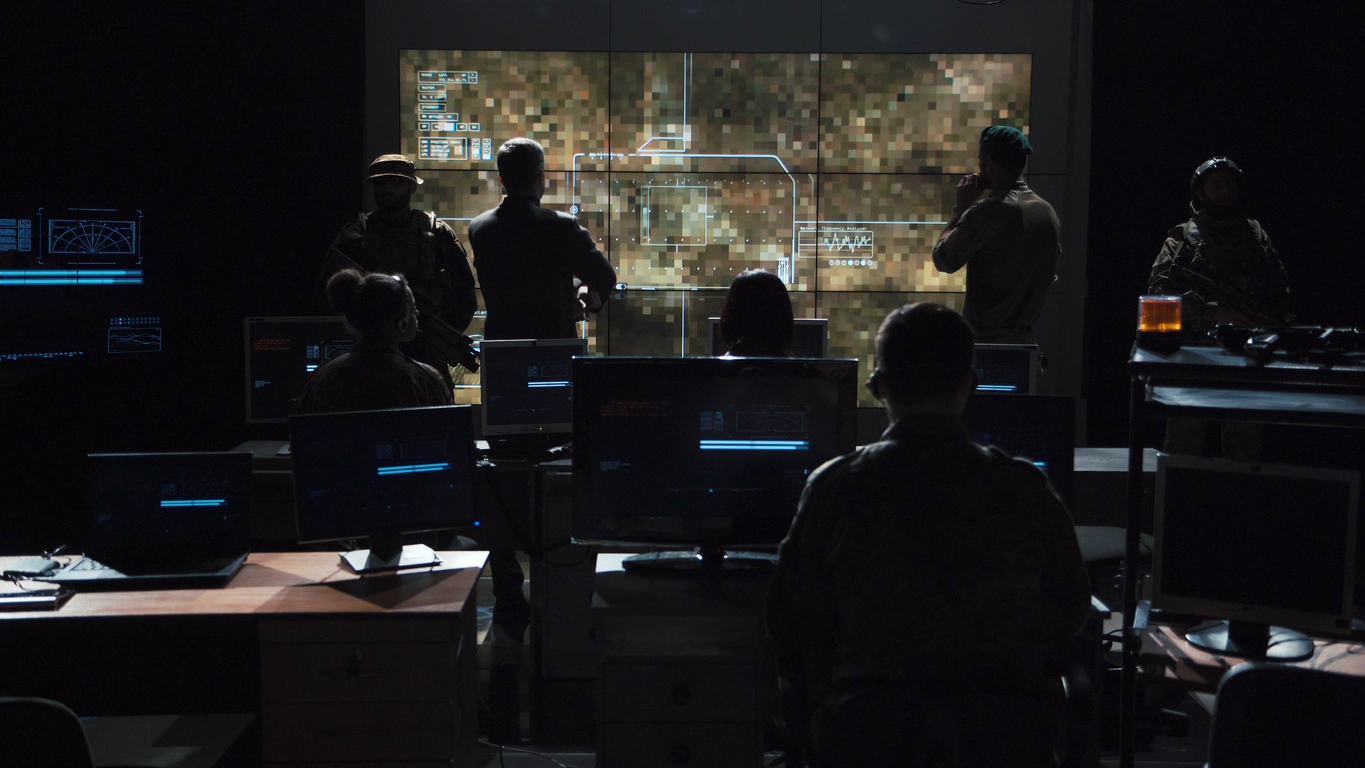
One of the first programs to be housed within JAIC is Project Maven, originally launched by former U.S. Deputy Secretary of Defense Bob Work in 2017. Work’s vision was to use computer vision algorithms to process drone footage quickly and in a useful way. The tool helps analysts hunt through video footage and still imagery, identify hostile activity, and pick out military targets.
People and computers will work symbiotically to increase the ability of weapon systems to detect objects...Eventually we hope that one analyst will be able to do twice as much work, potentially three times as much, as they're doing now. That's our goal.Marine Corps Col. Drew Cukor, Chief of the Algorithmic Warfare Cross-Functional TeamThis initiative has been described as a “pathfinder” - a model for future AI efforts, and is largely considered DoD’s first real attempt at cutting through the bureaucratic red tape to deliver AI tools quickly to warfighters. Defense officials now see the JAIC as an expansion of what Project Maven started: empowering analysts by equipping them with technology to effectively manage ever-growing mountains of data.
Read the thought piece to learn more about this topic and talk to the Analyst 2.0 Experts.
Contents
- Start Over


